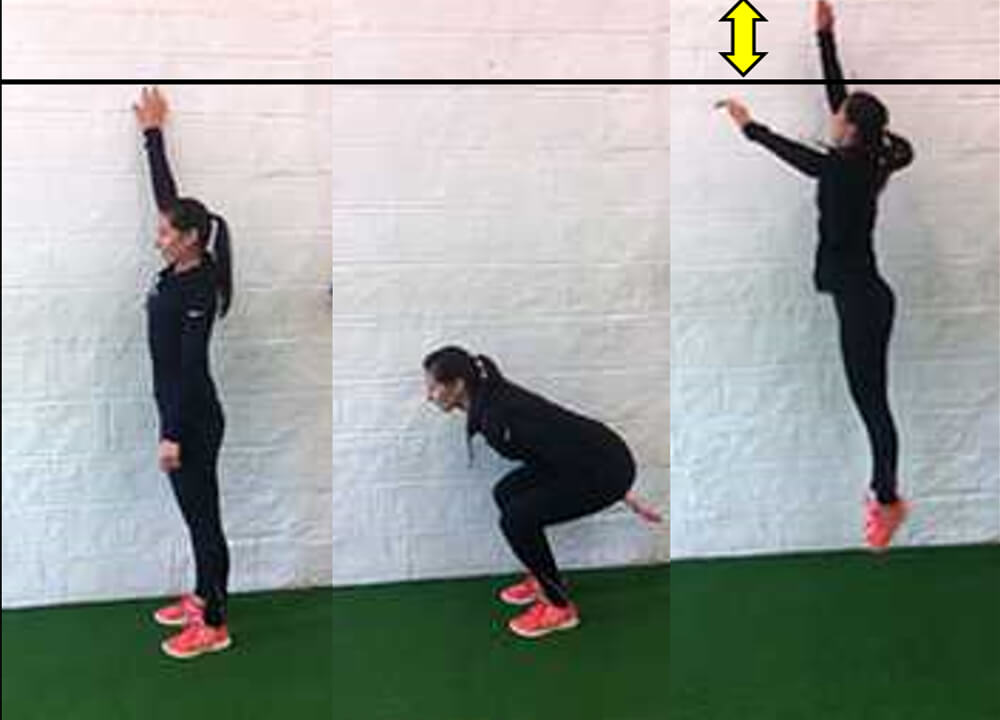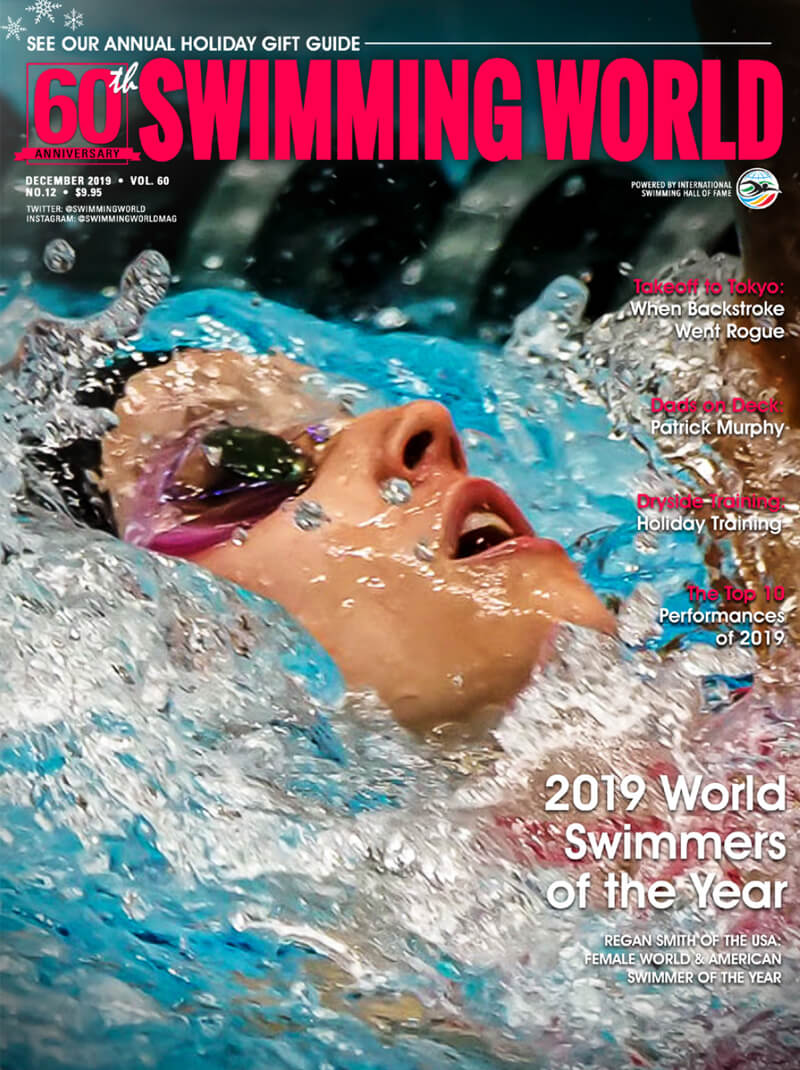Swimming World Presents “Swimming Technique Concepts: The Vertical Jump Test For Event Selection” By Dr. Rod Havriluk

Swimming Technique Concepts: The Vertical Jump Test For Event Selection”
By Dr. Rod Havriluk
The youngest competitive swimmers (under age 10) are often trained with a similar regimen regardless of their potential in specific events.
As swimmers age to become preteens, training often segregates swimmers by speed across all events, as opposed to sprint or distance specialty. Swimmers may not receive specialty training until the later teen years. Early identification of sprint vs. distance specialization can benefit swimmer training and also help to keep more swimmers in the sport.
VERTICAL JUMP SCORE AND MUSCLE FIBER COMPOSITION
The vertical jump test (VJ) can help with early identification of event specialization. The VJ has long been considered a measure of explosive power as the score varies with muscle fiber composition.
A higher VJ indicates a greater proportion of fast-twitch muscle fibers that “have higher contraction speeds and produce more force per contraction” (DeBruyn, 1979). A lower VJ indicates a greater proportion of slow-twitch fibers that are designed for generating less force over a longer time. Based on muscle fiber composition, swimmers with a higher VJ are better suited for sprinting, while swimmers with a lower VJ are better suited for distance events.
TESTING PROTOCOL
The VJ testing procedure is fairly simple. A person stands with the preferred side next to a wall (see main graphic, left image). The arm is held overhead with the fingers straight and the palm against the wall. A mark is made on the wall at the end of the middle finger. The person then squats (middle image), jumps, reaches and marks the wall at as high a point as possible (right image). The distance between the two marks is the VJ score.
To read more about how to use your VJ Score to determine your event potential,
Check out the December issue of Swimming World Magazine, available now!
Get Swimming World Magazine and Swimming World Biweekly FREE When You
Become A Member of the International Swimming Hall of Fame
Want More? Subscribe With This Special 2-Year Offer!
New! 1-Year Digital Only Subscription for just $39.95 Order Now!
Non-Subscribers Can Download This Issue For Only $5.94
FEATURES
016 THE TOP 10 PERFORMANCES OF 2019
by David Rieder
This year’s list of top performances in swimming comes exclusively from the 2019 FINA World Championships in Gwangju, where world records went down, the world’s best swimmers established themselves with signature performances, and teenagers took down legends in their best events. The list includes the top five performances for both female and male swimmers, with all swimmers eligible to appear only once.
020 2019 SWIMMERS OF THE YEAR
by John Lohn, Dan D’Addona, Craig Lord and David Rieder
World & American: Regan Smith & Caeleb Dressel, European: Katinka Hosszu & Adam Peaty, Pacific Rim: Ariarne Titmus & Daiya Seto, African: Tatjana Schoenmaker & Chad le Clos
026 TAKEOFF TO TOKYO: WHEN BACKSTROKE WENT ROGUE
by John Lohn
It’s been more than 30 years since the underwater dolphin kick altered the landscape of the backstroke event, and never more so than at the 1988 Olympic Games in Seoul did it play a greater role.
COACHING
010 LESSONS WITH THE LEGENDS: XU YIMING
by Michael J. Stott
014 SWIMMING TECHNIQUE CONCEPTS: THE VERTICAL JUMP TEST FOR EVENT SELECTION
by Rod Havriluk
The vertical jump is a relatively simple test that reflects a swimmer’s muscle fiber composition, which, in turn, can help select a swimmer’s most competitive events. Using the VJ test to identify swimmers likely to excel in sprint or distance events may not only improve performance at an early age, but also avoid losing sprinters who are averse to distance training and distance swimmers who are discouraged by sprinting.
041 Q&A WITH COACH BYRON MacDONALD
by Michael J. Stott
042 HOW THEY TRAIN KYLIE MASSE
by Michael J. Stott
TRAINING
013 DRYSIDE TRAINING: HOLIDAY TRAINING
by J.R. Rosania
JUNIOR SWIMMER
038 GOLDMINDS: WHAT MAKES GOOD COACHES GREAT?
by Wayne Goldsmith
Coaches change lives. They can inspire ordinary people to achieve remarkable and extraordinary things.
045 UP & COMERS: RYAN HOGAN
by Shoshanna Rutemiller
COLUMNS& SPECIAL SECTIONS
008 A VOICE FOR THE SPORT
009 BEYOND THE YARDS
029 HOLIDAY GIFT GUIDE
044 HASTY HIGH POINTERS
046 DADS ON DECK
047 GUTTERTALK
048 PARTING SHOT




